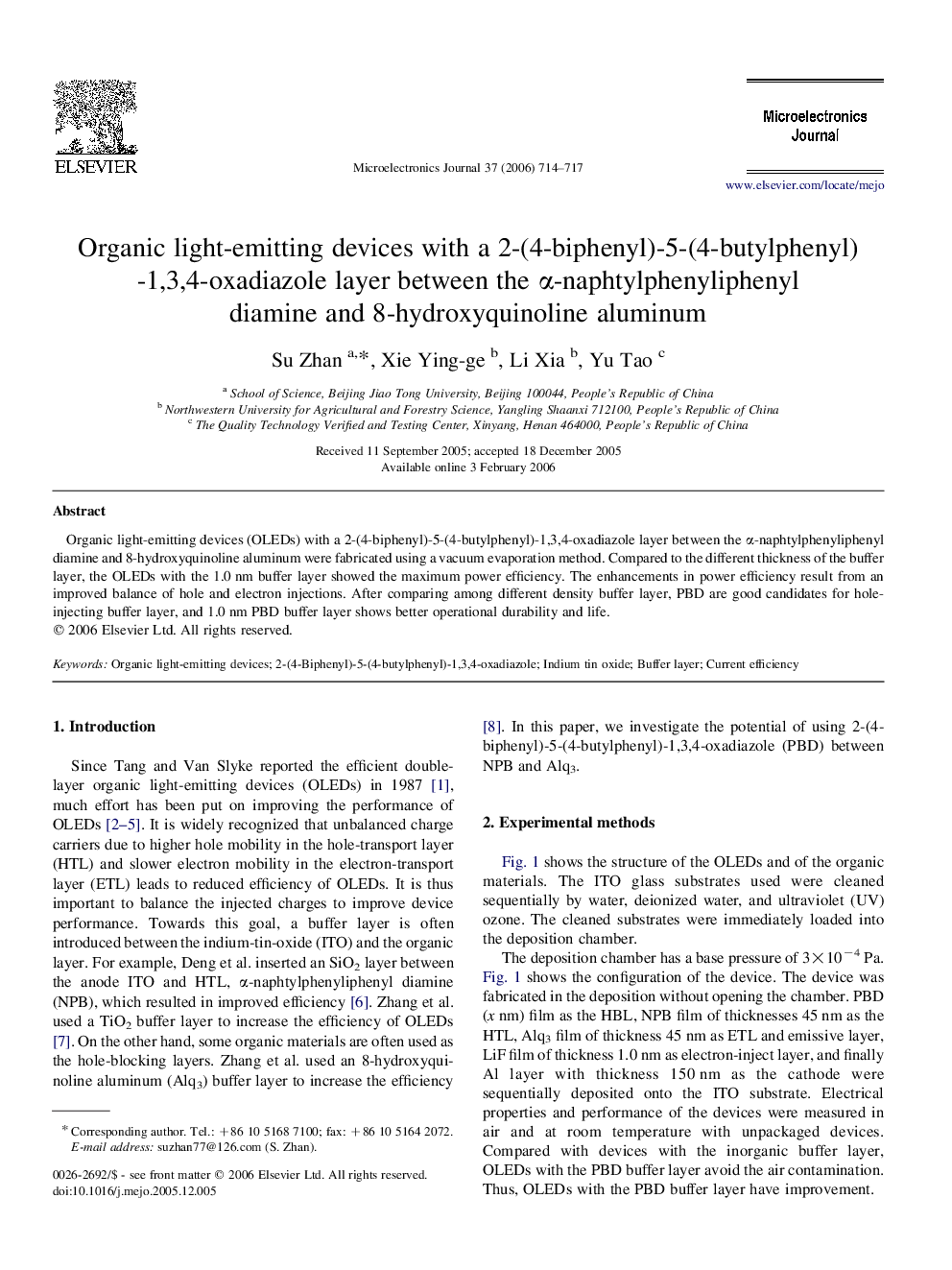| کد مقاله | کد نشریه | سال انتشار | مقاله انگلیسی | نسخه تمام متن |
|---|---|---|---|---|
| 542767 | 871574 | 2006 | 4 صفحه PDF | دانلود رایگان |
عنوان انگلیسی مقاله ISI
Organic light-emitting devices with a 2-(4-biphenyl)-5-(4-butylphenyl)-1,3,4-oxadiazole layer between the α-naphtylphenyliphenyl diamine and 8-hydroxyquinoline aluminum
دانلود مقاله + سفارش ترجمه
دانلود مقاله ISI انگلیسی
رایگان برای ایرانیان
کلمات کلیدی
موضوعات مرتبط
مهندسی و علوم پایه
مهندسی کامپیوتر
سخت افزارها و معماری
پیش نمایش صفحه اول مقاله

چکیده انگلیسی
Organic light-emitting devices (OLEDs) with a 2-(4-biphenyl)-5-(4-butylphenyl)-1,3,4-oxadiazole layer between the α-naphtylphenyliphenyl diamine and 8-hydroxyquinoline aluminum were fabricated using a vacuum evaporation method. Compared to the different thickness of the buffer layer, the OLEDs with the 1.0 nm buffer layer showed the maximum power efficiency. The enhancements in power efficiency result from an improved balance of hole and electron injections. After comparing among different density buffer layer, PBD are good candidates for hole-injecting buffer layer, and 1.0 nm PBD buffer layer shows better operational durability and life.
ناشر
Database: Elsevier - ScienceDirect (ساینس دایرکت)
Journal: Microelectronics Journal - Volume 37, Issue 8, August 2006, Pages 714–717
Journal: Microelectronics Journal - Volume 37, Issue 8, August 2006, Pages 714–717
نویسندگان
Su Zhan, Xie Ying-ge, Li Xia, Yu Tao,